Counted amongst the prettiest dwarf cichlids, Caudopunctatus Cichlid is an absolutely worthy addition to your Lake Tanganyikan collections. Not only is it stunning and appealing, but this species is also very active. They require ample space to swim around and make territories.
What makes them an ideal choice for all aquarists is their peaceful nature. Although they are active swimmers, they prefer minding their own business and never interrupt other tankmates. They love patrolling the aquarium constantly with their erect fins, making them permanently on display.
Are you planning to add some bright colors and an extremely active member to your tank but unsure about how to care? Here, we have gathered the essential care guidelines and some nifty facts about these species. Scroll down the page and become an informed owner.
Species Summary
Native to Lake Tanganyika, the Caudopunctatus Cichlid (Neolamprologus Caudopunctatus) mainly inhabits the Zambian shores. They prefer staying at a biotope comprising sandy bottom with rocky outcrops with water depths ranging from 6 feet to over 50 feet.
N. Caudopunctatus is a member of the Neolamprologus genus, which is the largest group of cichlids in Lake Tanganyika. There are 46 described species in this genus, and most of them are monomorphic.
They are known for their distinctive coloration, unique personality, and active nature.
| Scientific Name: | Neolamprologus Caudopunctatus |
| Common Name: | Caudopunctatus Cichlid |
| Origin: | Lake Tanganyika |
| Care Level: | Easy |
| Size: | 3.5 inches (9cm) |
| pH: | 8.0 to 9.0 |
| Temperature: | 73 to 77F |
| KH: | 15 – 25 dGH |
| Minimum tank size: | 30 gallons |
| Diet: | Omnivorous |
Appearance
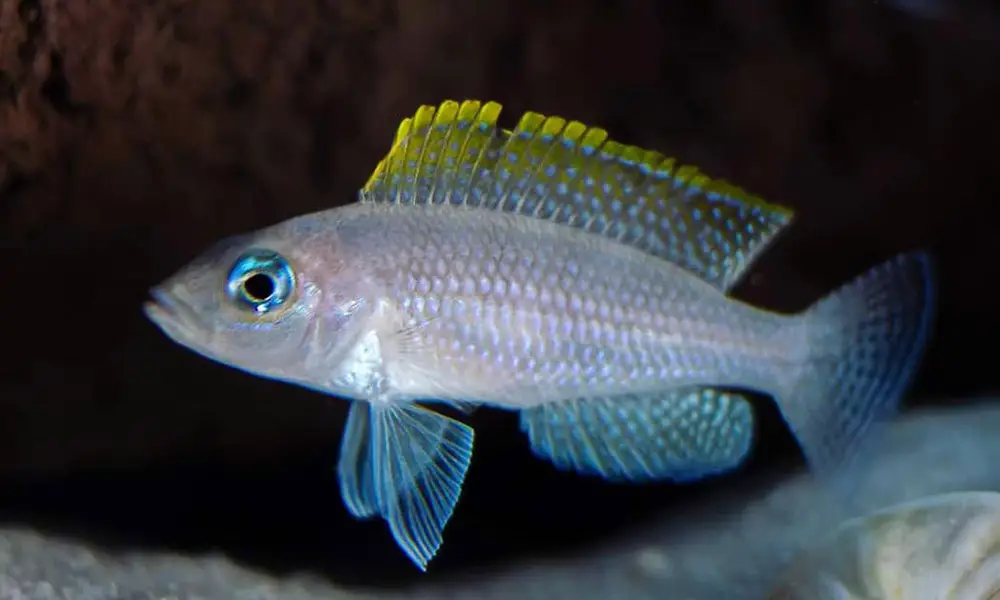
Caudopunctatus Cichlids are absolutely stunning to look at.
They feature a silvery-beige-colored, torpedo-shaped body with blue-rimmed eyes and a golden-orange dorsal fin.
These fish have pearl-like flecks on the tail fin that highlight when light hits them at a right angle. These spots are available on the body of both males and females, but males sometimes have the red and yellow hue on the upper outlines of their tail fins, giving them a more dramatic look.
You will be glad to know that this fish got its name due to these spots, as Caudopunctatus literally means “Spotted Tail.”
Their pelvic fins reflect white color, especially near the tips. While these are monomorphic species, there are still certain characters through which fishkeepers can identify males and females.
Firstly, males are slightly larger than females, and secondly, males show intense coloration compared to their female counterparts.
The best way to sex your cichlids is by venting them. This can be a bit of a tricky process, but if you have a keen eye, you will be able to notice the difference between male and female genital papillae. Generally, males have longer and pointier genital papillae as compared to females.
Caudopunctatus Cichlid (Neolamprologus caudopunctatus) Size
The male Caudopunctatus Cichlid attains a maximum size of 3.5 inches (9cm). However, females tend to be smaller and can only reach up to 2.6 inches (6.5 cm).
The approximate purchase size of these cichlids is anywhere between ¾ inches to 1 ¼ inches. But don’t get fooled by their small size. They are active swimmers and require ample space to move in the aquarium. Keep them in the large aquarium and see them guarding your tank throughout the day.
Lifespan
Like any other species from the Neolamprologus genus, the average Caudopunctatus Cichlid lifespan is somewhere between 8 and 10 years with proper care.
Care & Tank Setup
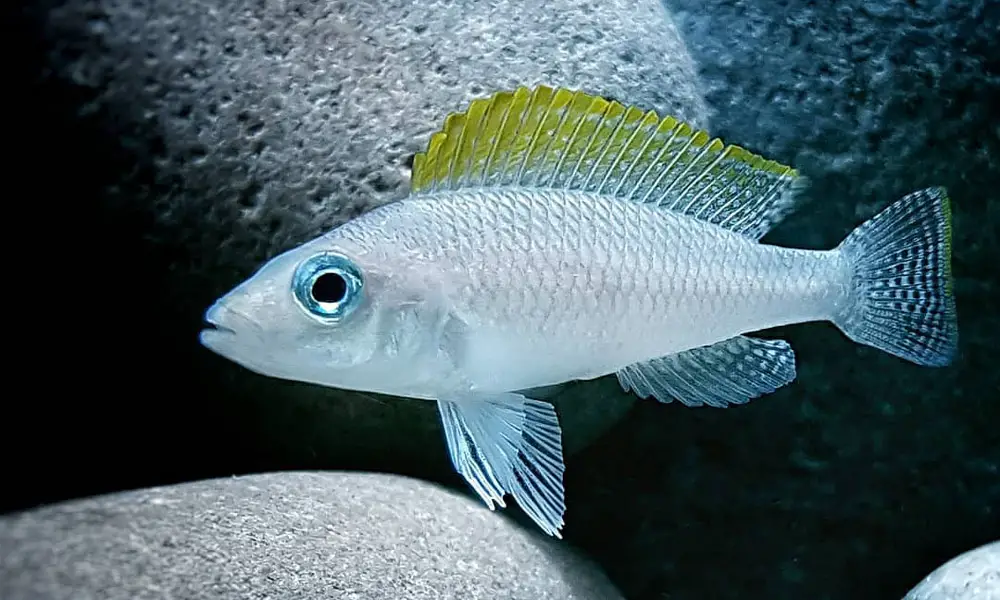
In their natural habits, Caudopunctatus Cichlids spend much of their time near rocks or shells with a sandy substrate. So, when setting up their tank, make sure to provide them with a similar biotope.
Interestingly, N. caudopunctatus live close to shells just for protection and they are not the “true” shell dwellers like its relative N. brevis.
Since these are semi-aggressive cichlids, caring for them is not much hassle. Provide them with appropriate tank conditions, and they will enjoy swimming around the day without interrupting others.
Because of their hardy and unfussy nature, whether you’re an experienced aquarist or a newcomer to the rift valley lake Cichlid, Caudopunctatus Cichlid care is quite manageable.
However, while these cichlids don’t require much, you still have to meet their basic needs to keep them happy and healthy.
Below are some common guidelines to follow before adding these species to your tank space.
Tank Size
Because of their small size, a bonded pair of Caudopunctatus Cichlids can be kept together in a 20-gallon tank (30″ x 12″ x 12″).
If you plan on keeping them in a group or with multiple smaller Tanganyikan cichlids in the same tank, you’ll need at least 30 gallons (36″ x 18″ x 12″). Of course, a 33-long (48″ x 12″ x 12″) aquarium with a larger footprint would be better.
Remember that they are very slow-growing species and take a few years to reach sexual maturity. Hence, you can also place them in small tanks, say 9-gallons or more, when they are small, and shift them to the large tank once they grow up.
Water Parameters
Despite African Cichlids being particularly sensitive to dissolved metabolites in the water, especially species from the popular Tropheus genus in Lake Tanganyika, the Neolamprologus species are relatively hardy.
The N. caudopunctatus is no exception.
However, these fish are still susceptible to water conditions of poor quality and lower oxygenation.
Moreover, they prefer living in hard, alkaline water, so maintain the right pH and hardness to avoid any trouble later on. Stick to the following parameters and make your new pet feel comfortable in your aquarium.
- pH: 8.0 to 9.0
- Water Temperature: 73 to 77F
- Hardness: 15 – 25 degrees
- Ammonia: 0 ppm
- Nitrite: 0 ppm
- Nitrate: <20 ppm
To ensure that your cichlids stay healthy and comfortable, do regular water changes of about 10-20% every week. This will help in getting rid of any dissolved metabolites and keeping the water quality up to the mark.
In addition, they come from oxygen-rich water; you should also invest in a good quality aquarium filter with an aeration option. This will help in maintaining the dissolved oxygen level and keeping your fish thriving.
Decor (Plants and Substrate)
Soft sandy and crushed corals form the best substrate for the aquarium that houses Caudopunctatus Cichlids. Provide them with a few inches of sand, African driftwood, and ample shells to facilitate their spawning process.
Rocks should be used to create crevices and caves in the tank so they can easily make their territories and shelters. There’re no special light requirements for these cichlids as they can easily manage standard aquarium lights without creating any fuss.
Food
The Caudopunctatus Cichlid is omnivorous.
In the wild, their natural food consists primarily of invertebrates and zooplankton that strike their fancy.
When it comes to their diet in captivity, you have a number of options to choose from.
The easiest food you can provide is high-quality sinking Cichlid pellets. These fish stay at the bottom areas of the aquarium, so choose pellets that are designed to sink. The NLS Cichlid Formula 1mm Sinking pellets are a great option and provide all the nutrients your fish needs to stay healthy and helps enhance color naturally.
- New Life Spectrum is made from quality natural ingredients
- Extreme Color enhancement and vitality in your fish
- Made in the USA
You can also supplement their diet with small meaty frozen foods, including Mysis Shrimp, daphnia, and vitamin-infused brine shrimp.
Caudopunctatus Cichlids are known to accept vegetables willingly. They enjoy shelled peas, circular-sliced cucumber, and small chunks of zucchini. This will help in providing them with essential vitamins and minerals.
While feeding them is simple, you need to follow certain instructions to avoid problems. For instance, offer them small meals rather than one large portion. Never overfeed them as it will impact their digestive system.
Caudopunctatus Cichlid (N. Caudopunctatus) Tank Mates
Caudopunctatus Cichlids are on the smaller side and do best in bonded pairs or groups in a species-only aquarium, especially when spawning, to keep their aggression in control.
As African Cichlids go, they are not extremely aggressive fish and can be housed with other Tanganyikan cichlids of identical size and temperament. Larger species of all genera should be avoided.
Here are some tank mates to try out:
- Synodontis multipunctatus (Cuckoo catfish)
- Neolamprologus leleupi (Lemon Cichlid)
- Julidochromis marlieri (Marlier’s Julie)
Breeding
The Caudopunctatus Cichlid is a rock dweller and substrate spawner that has a long history of being bred in captivity.
The most challenging part of their breeding process is getting a hold of a pair since they are slow-growing species that may take a few years to reach sexual maturity.
You should provide a few inches of sand and plenty of large empty shells for the female to lay their eggs.
The pair will find a secluded location near a rock or shell to dig a small pit in the substrate by creating a semi-circular rim at the base of their secluded spawning site.
The spawning process is a secretive affair, the female attaching her eggs (between 40 and 60) to the sides of the cave or shell. Once the male has fertilized the eggs, the male is then banished, and left the female alone guards the eggs whilst constantly fanning eggs with her pectoral fins.
The eggs incubate after 72 hours. After 5 to 7 days, the fry becomes free-swimming and should be offered small foods such as baby brine shrimp.
Final Thoughts
The Caudopunctatus Cichlid is a great addition to any Tanganyikan biotope aquarium. They are not difficult to care for as long as you provide them with the right environment and diet.
These fish are gorgeous and very fun to watch. Their interesting pattern and active nature make them a standout in the aquarium.
If there’s anything about this species that we missed, let us know in the comments below. And as always, happy fishkeeping!
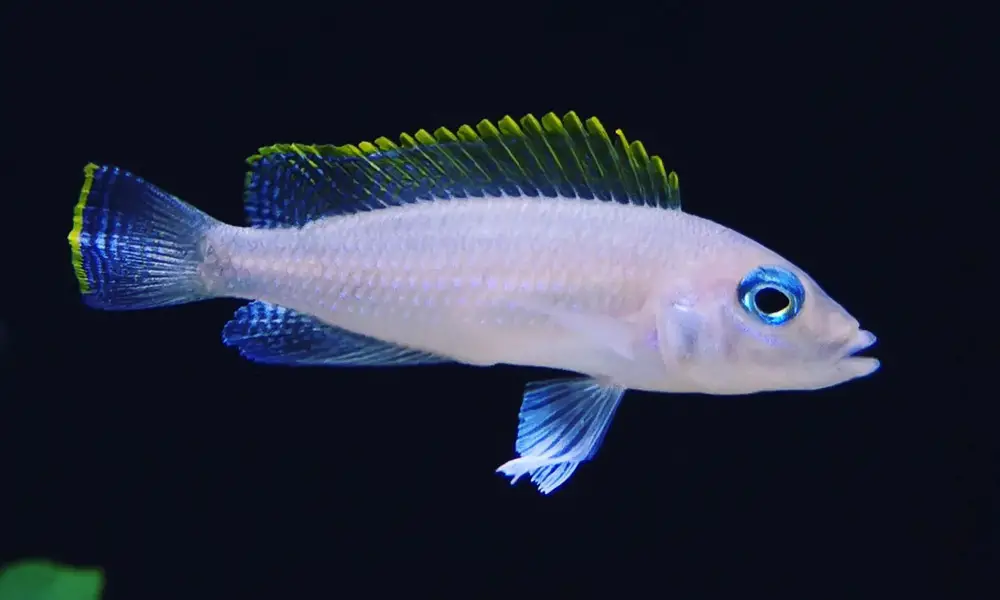


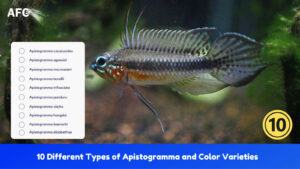
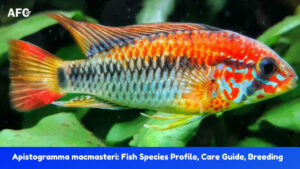
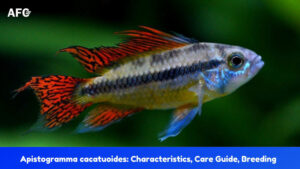

2 thoughts on “Caudopunctatus Cichlid (Neolamprologus Caudopunctatus) Care Guide & Species Profile”
Can you keep just one Caudopunctatus Cichlid in a community tank of other peaceful species?
Hi Kat
N. caudopunctatus is not a schooling fish, a single fish would be fine depending on the tank size and tank mates.
To observe its interesting breeding behavior, try to get a pair. I’d recommend that you start with a group of 5 – 8 as this species is tough to sex as juveniles.
Jeff